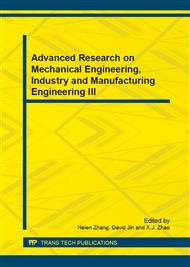p.355
p.359
p.364
p.368
p.372
p.376
p.380
p.384
p.388
Simulation Analysis on Industrial Wastewater Adjust Pool Stench in Collecting Hood with Properties of Environmental Materials
Abstract:
The relationship is very important between mechanical ventilation airflow pattern and the geometrical boundary parameters of wastewater gas-collecting hood. ANSYS is an effective approach to study of the problem. With a standard κε turbulent model of CFB predominate results show that: the exhaust outlet, tuyere location of pressure, velocity and concentration had a greater influence on the flow field distribution. FRP gas-collecting hood can be used to adjust pool in long-term because of its environmental material properties for acid and wet.
Info:
Periodical:
Pages:
372-375
Citation:
Online since:
August 2013
Authors:
Price:
Сopyright:
© 2013 Trans Tech Publications Ltd. All Rights Reserved
Share:
Citation:


